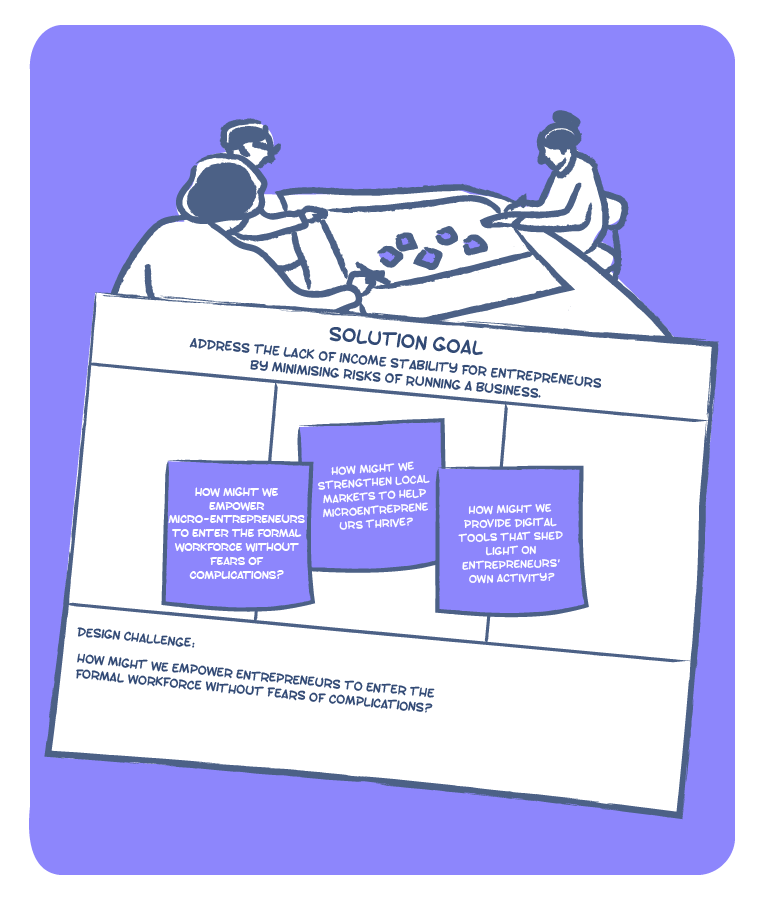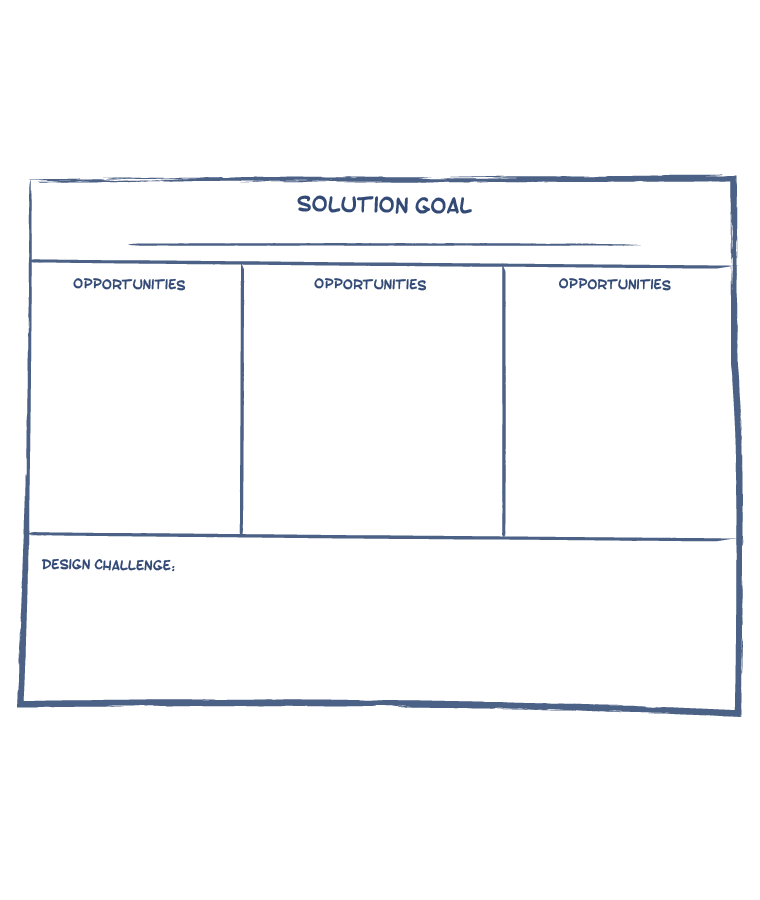HUMAN CENTERED DESIGN | IDEATION
Design Challenge
30 Min
A Design Challenge provides necessary direction and constraints for meaningful solutions to emerge. Framed in the form of 'How Might We…?’ statements, Design Challenges help problem solvers think from a solution oriented lens. The quality of challenge statements framed reflects a team's understanding of problems and opportunities that are worth solving.
USE CASES
- Translate a complex problem or opportunity into a clear solution oriented brief for solutioning.
- Define constraints for brainstorming.
LIMITATIONS
It is crucial that challenges reflect insights and learnings from research. Challenges that fail to do so risk derailing the solutioning process. Also, it is important to first list multiple challenges before focusing on a final set that seems relevant and exciting.

